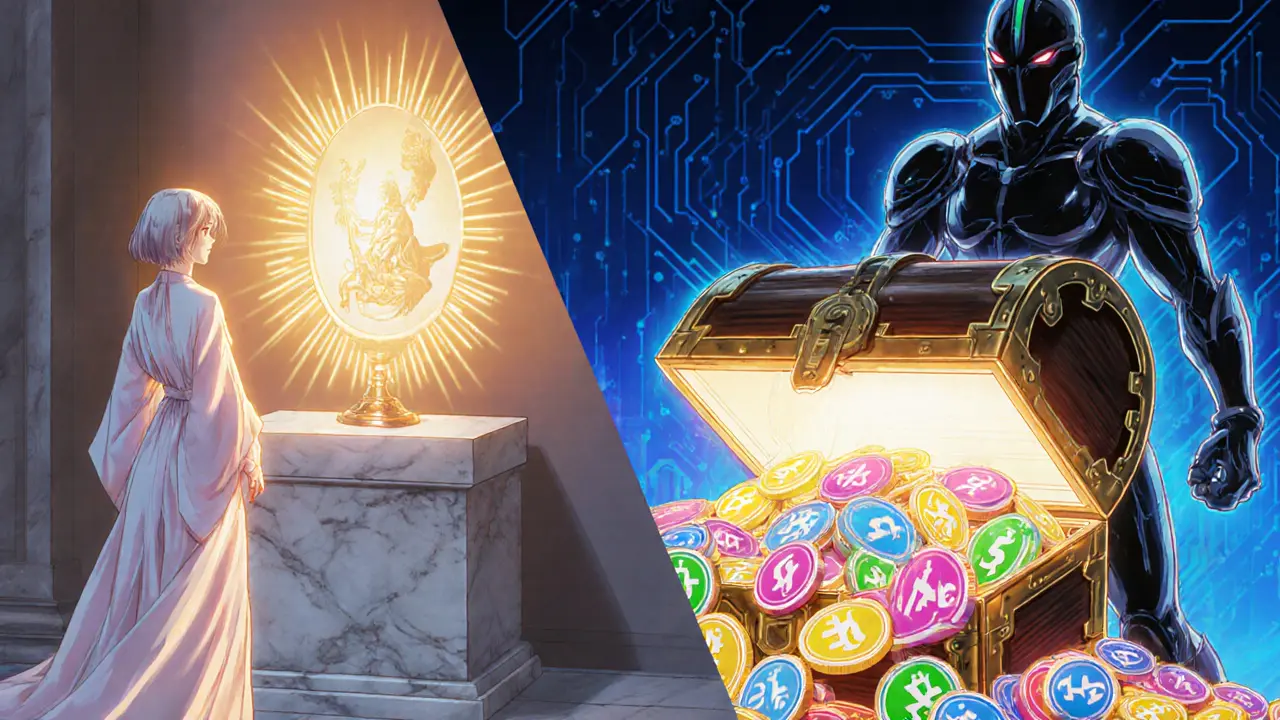ERC-721 vs ERC-1155: What You Need to Know
When exploring ERC-721 vs ERC-1155, the two most common token standards for NFTs on Ethereum, you quickly see they serve different purposes. Also known as NFT standards, they shape how creators build, trade, and manage digital assets.
ERC-721 is a standard that defines a single, non‑fungible token per contract. Each token has a unique ID and its own metadata, making it ideal for artworks, collectibles, and any asset that needs distinct ownership records. The main advantage is simplicity: developers only need to handle one token type, and wallets already display ERC‑721 assets without extra configuration.
ERC-1155 expands the idea by allowing multiple token types—both fungible and non‑fungible—to coexist in a single contract. This multi‑token approach reduces gas fees, simplifies batch transfers, and opens up hybrid use cases like gaming items that can be both stackable resources and unique skins. Because it packs several tokens together, ERC‑1155 often costs less per transaction compared to minting dozens of separate ERC‑721 tokens.
Why the Choice Matters for Developers and Collectors
Choosing between these standards isn’t just a technical preference; it directly impacts gas efficiency, user experience, and future scalability. For a single‑piece artwork, ERC‑721’s clear one‑to‑one mapping keeps things straightforward. In contrast, a game that needs thousands of identical swords and a handful of legendary swords will save a lot of ETH on gas by using ERC‑1155’s batch minting.
The two standards also differ in how they handle metadata. ERC‑721 typically points each token to an off‑chain URI, which can be a static JSON file. ERC‑1155 can store metadata at the contract level and reference it by token ID, letting creators update a whole category of items in one go. This flexibility matters when you want to roll out seasonal updates without redeploying contracts.
Security considerations also vary. Because ERC‑1155 combines many token types, a bug in the batch logic can affect a larger portion of assets. Auditors often give ERC‑721 a slight edge for simplicity, but the growing ecosystem of audited ERC‑1155 libraries has narrowed that gap.
Marketplace support is another practical factor. Most major NFT platforms accept ERC‑721 out of the box, while ERC‑1155 adoption is catching up, especially in gaming‑focused marketplaces. If you aim for broad visibility on platforms like OpenSea, ERC‑721 might give you a head start, but ERC‑1155 is quickly becoming the default for multi‑asset projects.
In short, ERC‑721 shines for uniqueness, while ERC‑1155 excels at efficiency and versatility. Understanding the trade‑offs helps you pick the right tool for your project's goals, whether that's a single masterpiece or a whole ecosystem of tradable items.
Below you’ll find a curated set of articles that break down each standard in detail, compare real‑world gas costs, and walk you through implementation steps. Dive in to see which token model aligns with your vision and start building with confidence.
ERC-721 vs ERC-1155: Which NFT Standard Fits Your Project?
A side‑by‑side breakdown of ERC‑721 and ERC‑1155, covering gas, security, implementation, use cases and a quick decision guide for developers.

